27 items in this album on 2 pages.
 |  |  |  |
| Lidice, Czechoslovakia in the 1930s. | Lidice, Czechoslovakia in the 1930s. Courtyard of the Horák family farm. The X marks the entrance to the cellars where the village men were gathered on the night of 9 Jun 1942. | Lidice, Czechoslovakia in the 1930s. Gate to the courtyard of the Horák family farm. The village men were marched through this gate and into the cellars on 9 Jun 1942. | Lidice, Czechoslovakia in the 1930s. St. Martin’s church built in 1732 seen in the distance from the village cemetery. |
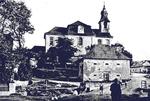 |  |  | 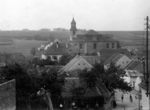 |
| Lidice, Czechoslovakia in the 1930s. St. Martin’s church built in 1732 with one of the village’s barns in the foreground. | Lidice, Czechoslovakia in the 1930s. St. Martin’s church built in 1732 with one of the village’s barns in the foreground. | Lidice, Czechoslovakia in the 1930s. St. Martin’s church sits prominently in the center of the village. | Lidice, Czechoslovakia in the 1930s. St. Martin’s church sits prominently in the center of the village. |
 |  |  |  |
| Lidice, Czechoslovakia in the 1930s. St. Martin’s church sits prominently in the center of the village. The dark roofs in the foreground are the Horák family farm where all 173 Lidice men were killed on 10 Jun 1942. | Lidice, Czechoslovakia in the 1930s. The Lidice school, where the village women and children were held on 9 Jun 1942. | Lidice, Czechoslovakia in the 1930s. These peasant homes were the first to be destroyed on 10 Jun 1942. | Lidice, Czechoslovakia 10 Jun 1942. Courtyard of the wrecked Horák family farm before the structures were totally destroyed. |
 | 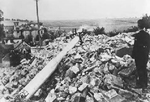 |  | 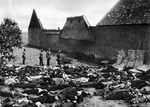 |
| Lidice, Czechoslovakia 10 Jun 1942. SS firing squad conducting execution of all of the village’s men, ten at a time, at the Horák family farm. | Lidice, Czechoslovakia 10 Jun 1942. SS officer overseeing the destruction of the village. The wreck of St. Martin’s church built in 1732 is still standing in the village center. | Lidice, Czechoslovakia 10 Jun 1942. SS officer standing over the bodies of all 173 of the village’s men in the garden at the Horák family farm. The mattresses were put up against the stone wall to prevent ricochets. | Lidice, Czechoslovakia 10 Jun 1942. SS officer standing over the bodies of all 173 of the village’s men in the garden at the Horák family farm. The mattresses were put up against the stone wall to prevent ricochets. |
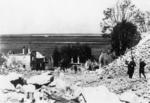 | 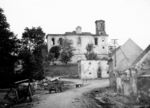 | 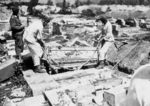 |  |
| Lidice, Czechoslovakia 10 Jun 1942. SS officers overseeing the destruction of the village. | Lidice, Czechoslovakia 10 Jun 1942. St. Martin’s church built in 1732 with one of the village’s barns in the foreground burned out but before explosives reduced them to rubble. | Lidice, Czechoslovakia 10 Jun 1942. The village cemetery in the act of being looted. | Lidice, Czechoslovakia 10 Jun 1942. The village cemetery with all graves open and the headstones broken up. |
27 items in this album on 2 pages.



















